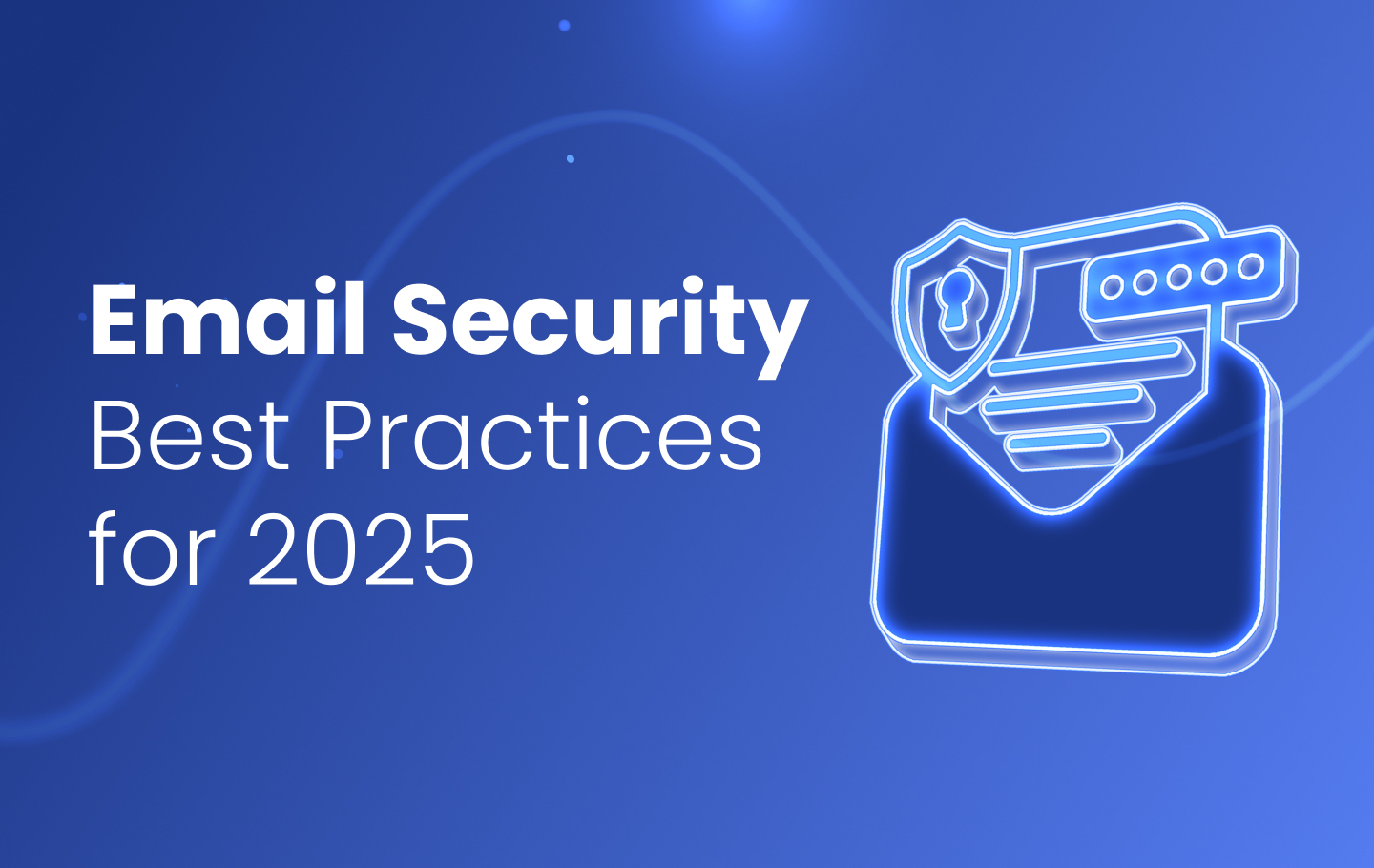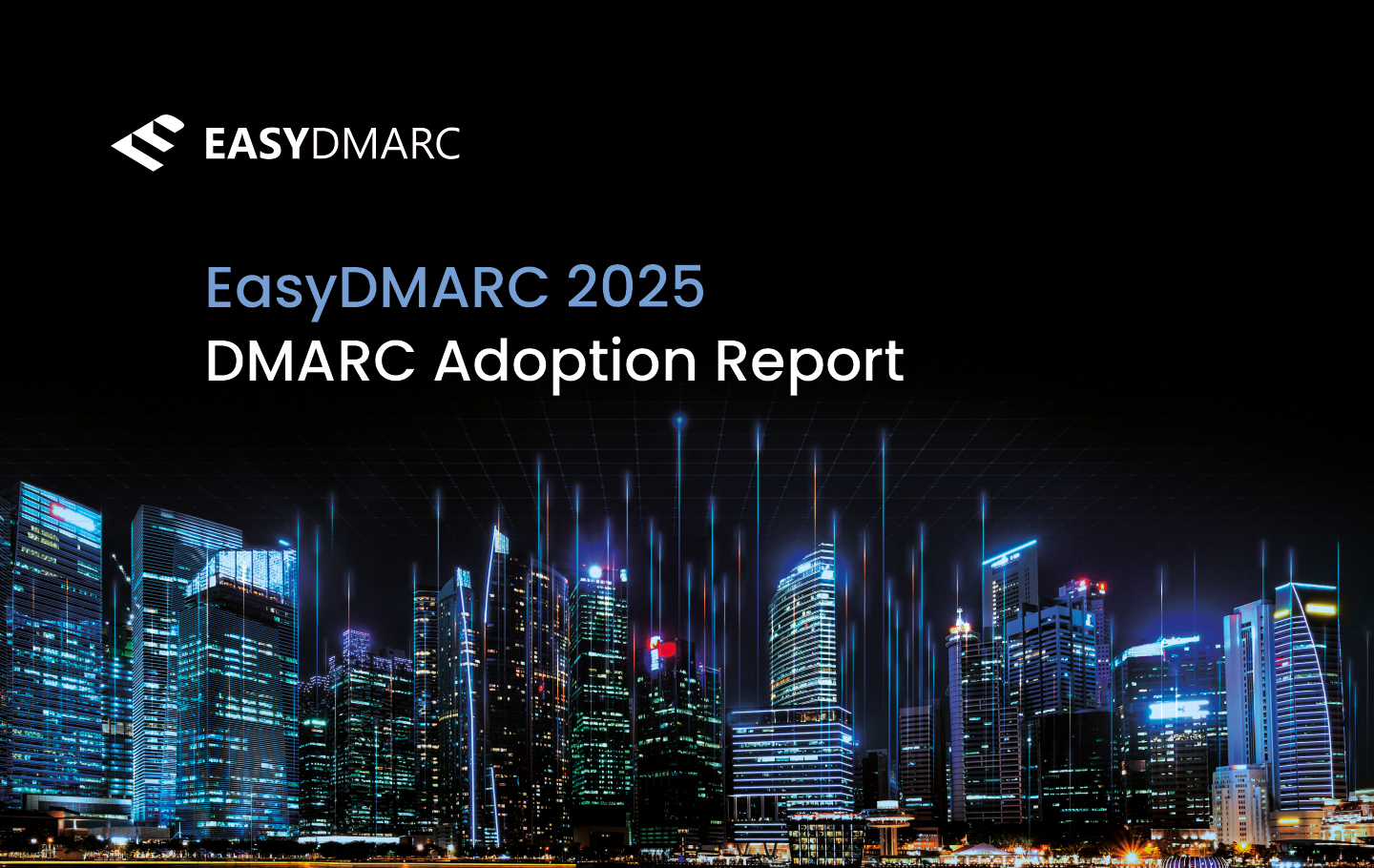The Importance of Email Communication
Since its inception, email has remained a vital tool in both corporate and daily life, streamlining professional communication for tasks like project coordination and client outreach, while simultaneously enabling people to manage online accounts, do online shopping, and connect with loved ones. Despite the rise of other platforms, email continues to be the backbone of digital interactions, facilitating seamless exchanges between businesses, customers, and colleagues and playing a crucial role in company success and engagement.
Evolving Risks and Mitigation
However, email’s ubiquity makes it a prime target for cyber threats, such as phishing, which can lead to data breaches and reputational damage. Fortunately, these risks can be mitigated by implementing robust security protocols.
Implementing Effective Email Security
To safeguard email, organizations should adopt best practices like using DMARC, DKIM, and SPF for authentication, and employing advanced security tools such as email gateways and encryption. This blog will explore these essential practices, helping businesses navigate email threats and maintain secure digital communications.
DMARC is the First Step in Securing Corporate Emails
DMARC, or Domain-based Message Authentication, Reporting, and Conformance, is a crucial email authentication protocol that protects domains from unauthorized use, or spoofing, by building on SPF (Sender Policy Framework) and DKIM (DomainKeys Identified Mail) standards. It allows organizations to define policies for handling unauthenticated emails, enhancing the trustworthiness of the “From” field, and preventing malicious emails from reaching inboxes.
DMARC also provides detailed reports on authentication attempts, enabling domain owners to monitor and adjust their security policies. By using DMARC, businesses can significantly reduce phishing risks, safeguard their brand reputation, and protect sensitive information.
Four Best Practices for Email Security
In today’s digital landscape, maintaining robust email security is paramount for businesses. This involves a multi-faceted approach that includes being cautious with unusual messages from unfamiliar sources, protecting passwords, using secure networks, and implementing iron-clad email security measures. By educating staff on how to identify and handle potential threats, organizations can significantly reduce the risk of phishing and other email-based attacks.
Beyond training, other essential strategies include:
- Avoiding Risky Behaviors: Refraining from clicking on suspicious links or downloading attachments from unknown senders
- Utilizing Advanced Tools: Leveraging technologies like DMARC and email security gateways to enhance protection
- Securing Networks: Ensuring that all email communications occur over secure, encrypted networks
In this discussion, we will delve into these key areas, providing insights on how to effectively implement email security best practices for employees and leverage the right tools to ensure a secure email environment. By focusing on these strategies, businesses can protect their digital communications and maintain a strong security posture.
1. Have a Strong Password Policy and Multifactor Authentication
The Evolution of Strong Passwords
Password creation has undergone a significant transformation, moving away from complex, hard-to-remember character strings and embracing longer, more memorable passphrases.
Key characteristics of modern strong passwords include:
- Longer length (typically 12-16 characters)
- Use of natural language or memorable phrases
- Strategic capitalization and punctuation
- Avoiding common words or predictable patterns
For example, a passphrase like “kittEnsarEadorableE!” is not only easier to remember but also significantly more difficult to crack than traditional complex passwords. These longer, more natural language-based passwords provide greater entropy, making them resistant to both brute-force attacks and dictionary-based hacking attempts.
The Balanced Approach to Password Rotation
Traditional password change policies have proven problematic. Frequent mandatory changes often lead to predictable modifications, with users typically making minimal alterations to existing passwords. This approach can actually decrease overall security, as forced rotations encourage predictable patterns that hackers can exploit.
Recommended best practices now include changing passwords only when there’s a genuine security concern, conducting annual password reviews, and implementing immediate changes after suspected unauthorized access. The focus has shifted from frequent changes to meaningful, strategic password management that prioritizes genuine security over arbitrary rotation schedules.
The Critical Importance of Password Uniqueness
Reusing passwords is equivalent to using the same key for multiple locks—a single breach could compromise everything in your digital life. Unique passwords create individual security barriers for each account, preventing credential stuffing attacks and limiting the potential damage from data breaches.
Practical strategies for maintaining unique passwords include using a reputable password manager, generating random passwords for each account, and regularly auditing your password collection. By treating each digital account as a distinct security zone, you significantly reduce the risk of widespread account compromise.
Multi-Factor Authentication
Multi-factor authentication (MFA) provides multiple layers of defense through different authentication factors. These typically include something you know (like a password), something you have (such as a smartphone), and something you are (biometric data like fingerprints).
Modern MFA methods have become increasingly sophisticated:
- Authenticator apps generating time-based one-time passwords
- Hardware security keys for physical authentication
- Biometric systems combining convenience and security
Even if a password is compromised, these additional authentication layers prevent unauthorized access, dramatically reducing the risk of account infiltration. The multiple verification steps create a robust security mechanism that goes far beyond traditional password protection.
Practical Steps for Implementation
Implementing these security measures doesn’t require advanced technical knowledge. Start by conducting a comprehensive password audit, transitioning to strong, unique passphrases, and enabling MFA on all possible accounts. A reputable password manager can simplify this process, generating and storing complex, unique passwords across your digital ecosystem.
Remember, cybersecurity is not about achieving absolute perfection, but about consistently making it significantly harder for potential attackers to gain unauthorized access to your digital life. Each small step you take improves your overall digital security posture.
2. Practice Caution with Unusual Messages
Understanding and Identifying Phishing Attempts
Phishing has become increasingly sophisticated, making it crucial to develop a keen eye for suspicious communications. The first line of defense is careful examination of every email that lands in your inbox. When identifying potential phishing attempts, it’s important to pay attention to unexpected emails claiming urgent action, requests for personal information, messages that create a sense of panic or excitement, and sender email addresses that look suspicious or irregular.
Email addresses are the most telling indicator of potential threats; always scrutinize the sender’s full email address, not just the display name. Cybercriminals often use email addresses that closely mimic legitimate ones, with slight variations that can be easily overlooked at first glance. Key warning signs include:
- Unusual domain names
- Misspellings in the email address
- Generic sender names
- Emails from seemingly official sources with suspicious formatting
The Dangers of Email Attachments
Opening email attachments is a minefield of potential security risks, regardless of your email client’s built-in scanning capabilities. High-risk file types include:
- Executable files (.exe)
- Java archives (.jar)
- Windows installer files (.msi)
- Word documents
- PDF files
Even seemingly harmless files can contain malicious code. Cybercriminals have become increasingly adept at embedding malware in seemingly innocuous file types. The safest approach is to treat all unsolicited attachments with extreme caution. Critical steps to protect yourself include avoiding opening attachments from unknown senders, verifying the sender through alternative communication methods, contacting the sender directly using a verified phone number, and, when in doubt, deleting the email.
Navigating Email Links with Caution
Links in emails are another critical point of vulnerability. What you see is not always what you get; anchor text can mask the true destination of a hyperlink. Protective strategies include:
- Always hover your mouse cursor over links to reveal the actual URL
- Watch for subtle misspellings in web addresses
- Be wary of unusual domain extensions
- Avoid clicking links that don’t match the supposed sender’s official website
Legitimate organizations will never pressure you to click a link immediately or threaten negative consequences for inaction. If an email claims to be from a service you use, it’s always safer to manually type the website address into your browser, use a bookmarked link, or log in directly through the official website.
Work Email: A Professional and Secure Communication Tool
Your work email is a professional tool with a singular purpose: business communication. Misusing this critical resource can expose your organization to significant risks, including increased vulnerability to cyber attacks, potential exposure of sensitive corporate information, violation of company policies, and potential compromise of personal data. Treating your work email as a strictly professional communication channel is essential for maintaining the security and integrity of both individual and organizational digital assets.
Key principles for work email use are:
- Use work email exclusively for professional communications
- Only access work email from approved devices
- Avoid personal subscriptions or casual communications
- Understand and follow your organization’s email usage policies
Practical Steps for Email Security
Implementing these email security practices requires consistent vigilance and a proactive mindset. Remember to:
- Always think before you click
- Verify unexpected communications through alternative channels
- Treat your work email as a professional tool with specific, limited-use parameters
- Stay informed about the latest phishing and email security threats
By adopting these practices, you not only protect yourself but also contribute to your organization’s overall cybersecurity posture. Remember, in the digital world, your email is often the first line of defense against potential security breaches.
3. Use Secure Networks and Email Protocols
The Critical Importance of Communication Encryption
Encryption is the digital equivalent of a secure vault for your communications, protecting sensitive information from unauthorized access and malicious interception. Without encryption, your data becomes vulnerable to various cyber threats which can compromise everything from personal messages to critical business communications, potentially exposing confidential information, login credentials, and financial details. Modern encryption transforms your data into an unreadable format that can only be deciphered by intended recipients with the correct decryption key, creating a robust barrier against potential cyber intrusions.
Navigating the Risks of Public Wi-Fi
Public Wi-Fi networks represent one of the most significant security risks in modern digital communication. These networks are essentially open highways for potential cybercriminals, where almost anyone connected can potentially intercept your data transmissions. While Virtual Private Networks (VPNs) can provide some protection by creating an encrypted tunnel for your internet traffic, the safest approach is to avoid public Wi-Fi entirely. When working in public spaces, consider alternative options such as:
- Using your smartphone’s mobile hotspot
- Relying on private, password-protected networks
- Utilizing dedicated mobile data connections
- Waiting until you have access to a secure, private network
If you must use public Wi-Fi, a reputable VPN is essential, but it should be viewed as a last resort rather than a complete solution to network security.
Email Security Protocols and Protective Tools
Email security extends far beyond simple password protection. Advanced protocols like DKIM, SPF, and DMARC provide critical layers of protection against email spoofing and phishing attempts. These protocols work together to verify the authenticity of email senders and prevent unauthorized use of domain names, and help users easily set up DMARC.
Comprehensive email security requires a multi-layered approach, incorporating various protective tools:
- Antimalware software to detect and remove malicious code
- Antispam filters to reduce unwanted and potentially dangerous communications
- Antivirus programs to prevent email-based virus transmission
- Robust firewalls to monitor and control network traffic
- Advanced threat detection systems that identify potential security risks
For organizations seeking comprehensive email authentication, services like EasyDMARC offer robust solutions, including our SPF lookup, DKIM Record Checker, DKIM Record Generator, and DMARC checker, for implementing and managing these critical security protocols.
The Simple Yet Crucial Act of Logging Out
Logging out might seem like a trivial security measure, but it is one of the most straightforward ways to protect your digital communications. An unlocked computer with an active email session is an open invitation for unauthorized access. Whether in a shared office, coffee shop, or any public space, leaving your device unattended and logged in can result in:
- Unauthorized access to sensitive communications
- Potential data theft
- Risk of impersonation
- Breach of personal and professional confidentiality
Make logging out a reflexive habit. Set your devices to automatically lock after a short period of inactivity, and always manually log out of email and other sensitive applications when stepping away, even briefly.
Building a Comprehensive Security Mindset
Protecting your digital communications requires constant vigilance and a proactive approach. By understanding and implementing these security strategies—encryption, avoiding risky networks, utilizing advanced email protocols, and maintaining strict logout practices—you create multiple layers of defense against potential cyber threats. Remember, in the digital landscape, your security is only as strong as your most vulnerable point.
4. Get Iron-Clad Email Security with EasyDMARC
Email security is far more than a technical checklist—it’s a critical investment in your organization’s digital infrastructure. While employee training, security protocols, and advanced tools are essential layers of protection, they are ultimately supplementary to the foundational security provided by robust email authentication mechanisms. DMARC stands as the cornerstone of email security, and platforms like EasyDMARC have simplified the implementation of these critical protective measures.
At EasyDMARC, we offer a comprehensive suite of email authentication tools designed to make complex security protocols accessible and manageable. Our platform provides DMARC, SPF, and DKIM verification services with flexible pricing options to suit organizations of all sizes. From free basic plans that allow initial record checks to enterprise-level solutions with advanced reporting and monitoring, we ensure that businesses can implement robust email security without breaking the bank. Our tools help organizations identify potential email vulnerabilities, prevent domain spoofing, and create a secure communication environment that protects both sender reputation and recipient trust.
The verification of DMARC records, SPF, and DKIM is not just a technical exercise—it’s a critical defense mechanism against some of the most sophisticated cyber threats. These protocols work together to authenticate the true origin of emails, prevent unauthorized use of domain names, and significantly reduce the risk of phishing, spoofing, and other malicious email-based attacks. By implementing these verification methods, organizations create a trusted communication ecosystem that protects both internal and external stakeholders.
Despite the evolving digital landscape, email remains an indispensable communication method. It continues to be the standard for account creation, a primary channel for marketing communications, and a reliable platform for professional interactions. As cyber threats become more complex, DMARC has emerged as the guardian that maintains email’s integrity and trustworthiness. For corporate accounts, verifying and implementing robust DMARC protocols is not just recommended—it’s essential. By investing in comprehensive email security, organizations can continue to leverage this powerful communication tool with confidence, knowing they have created a formidable defense against potential digital threats.


